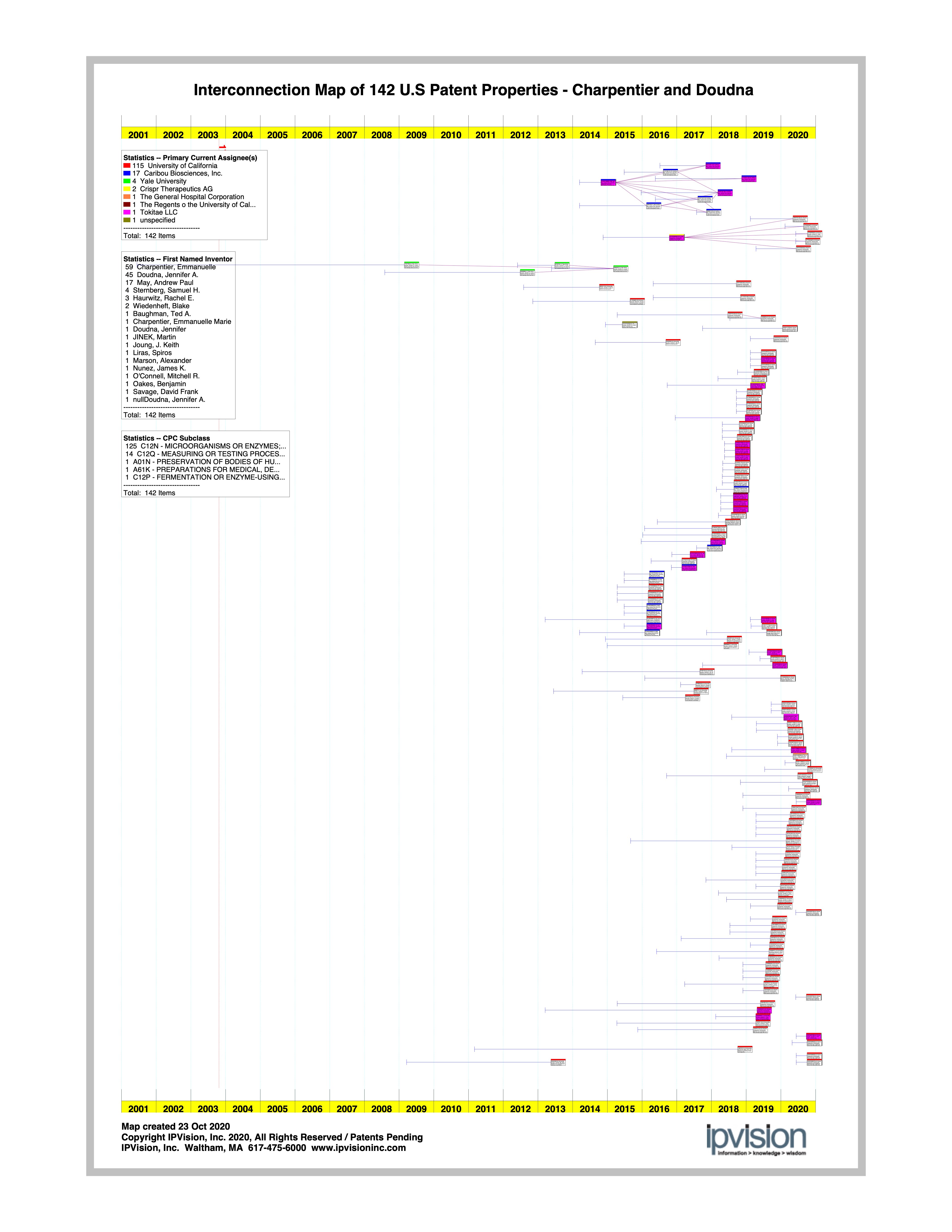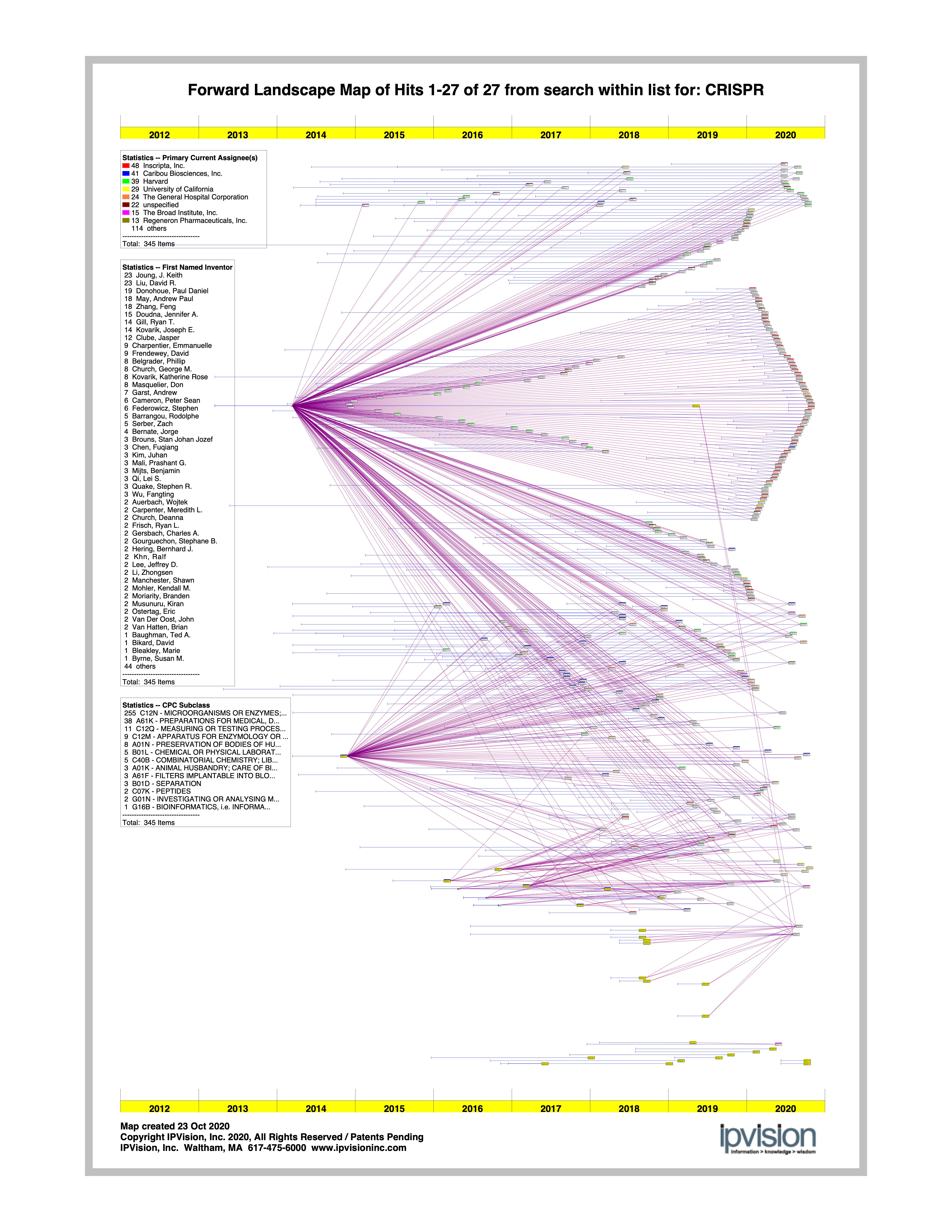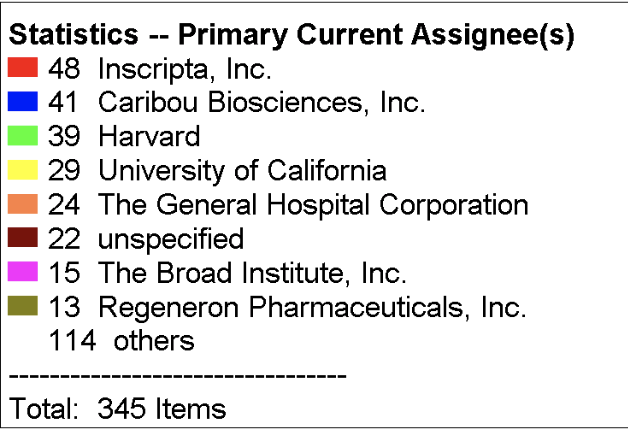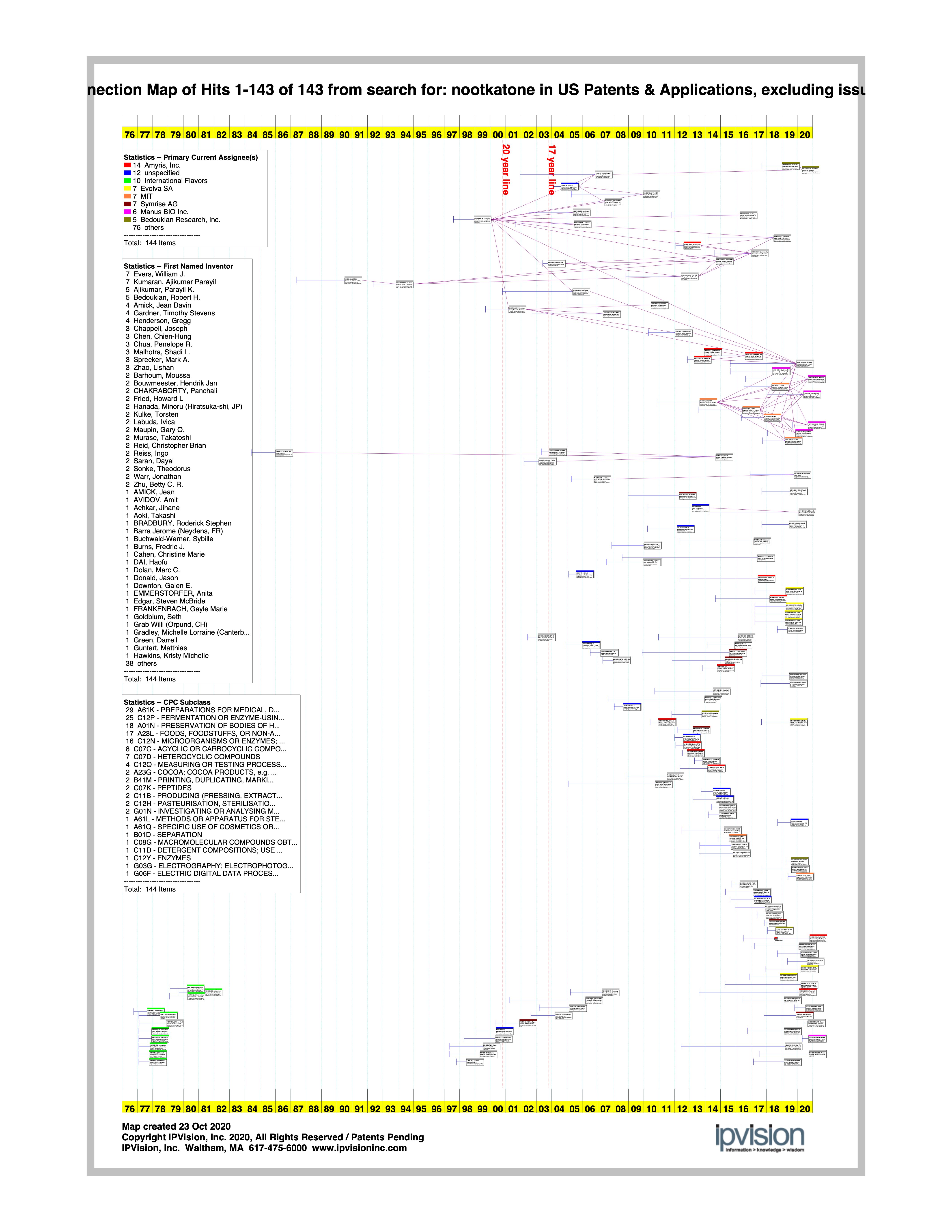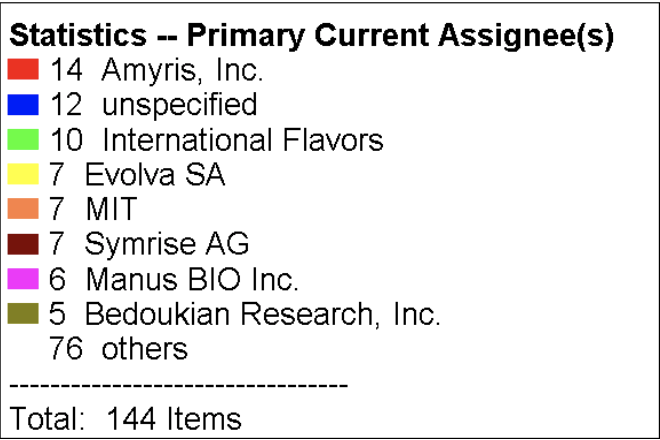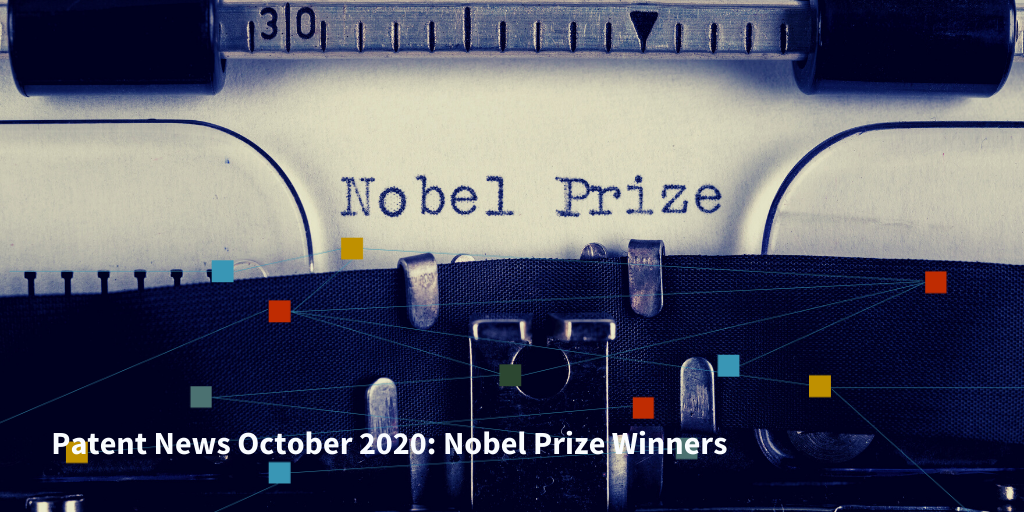
‘Tis the season for the crowning of new winners of the Nobel Prize – possibly the highest goal of all patent holders. A way to see who and what is changing the world. How are they doing it? And what could be changing the world in other ways?
Nobel Prizes Awarded
Chemistry
|
The highest honor for any scientist, the Nobel Prize has been awarded for 2020. The winners in the field of chemistry were Emmanuelle Charpentier and Jennifer A. Doudna for discovering CRISPR/Cas9, very precise genetic code modification. CRISPR is a DNA segment that can cut genome chains at precise points. The discovery made was an important step in cancer research. Although Charpentier and Doudna were awarded the Nobel Prize for their CRISPR discovery, their research has been much broader as shown by this IPVision Patent Interconnection Map™. The 27 magenta colored boxes are patent properties that contain the word “CRISPR” in the Title, Abstract or Claims:
|
Click map for interactive version. |
Patents Citing Charpentier and Doudna CRISPR Patent Properties
|
Click map for interactive version. |
The importance of the CRISPR discovery is underscored by the rapid patenting in this area. The IPVision Forward Landscape Map™ to the left shows the 27 CRISPR U.S. patent properties (the earliest of which was published in 2014) and the 130 other U.S. patents that have cited one or more of these CRISPR patents. The owners of these forward citation patents are: |
Physics
In the field of physics, the Nobel Prize was awarded to Professors Roger Penrose, Reinhard Genzel and Andrea Ghez. Prof. Penrose earned the award for predicting black holes using mathematic models based on the theory of General Relativity, while Profs. Genzel and Ghez performed research to prove the existence of an enormous black hole from the center of the Milky Way known as Sagittarius A. Although none of these winners is listed on any U.S. patent properties, it is of note that there are 2,971 U.S. patent applications or issued U.S. patents that have been published in the past 10 years. The Nobel award notes that Genzel and Ghez built “unique instruments” that enabled them to do their work – these are presumably “patent worthy.”
Medicine
|
And the Nobel Prize in the field of medicine was earned by the three professors who discovered the hepatitis C virus. Thanks to the work of Professors Harvey J. Alter, Michael Houghton and Charles M. Rice, blood tests were developed to eliminate the risk of catching the disease through human blood transfusions. Antiviral drugs have also been developed to fight the disease. Houghton is listed as an inventor on 144 U.S. patent properties, Rice on 12 and Alter on 3. These are shown on the IPVision Patent Citation Interconnection Map – Rice shaded in yellow and Alter in magenta: |
Click map for interactive version. |
Telehealth Battle Heats Up
In this age of pandemic across the country and around the world, telehealth has become a necessity for many. It’s no good for anyone when two telehealth companies begin a battle over infringement claims, specifically Teladoc suing Amwell over the digital scopes and stethoscopes on telehealth carts.
These two companies have been to court before, with Amwell suing Teladoc in 2007 that was thrown out. The suit, if successful, would have forced treble damages and cessation of business for Teladoc. Losing access to telehealth now, however, seems a much bigger deal as so many rely on the home health options available to them.
EPA Approves Non-Toxic Chemical to Fight Against Insect-Borne Diseases
The Environmental Protection Agency approved nookatone, a citrus oil that can be found in grapefruit and cedar trees, as a chemical that can be used as an insect repellant. What makes nookatone stand out is its natural non-toxicity to humans as well as animals. Scientists are excited about the new repellant because it will ward off ticks and mosquitos, which can be deadly if infected with such harmful diseases as West Nile Virus, Zika, Lyme, Rocky Mountain Spotted Fever, and malaria. Use of such a harmless chemical could make more people consider using repellant and lead to less disease across the US.
Interestingly, there are 143 U.S. patent properties with the word “nookatone” in their Title, Abstract, or Claims:
|
Click map for interactive version. |
|
Brits from the National Forest Company Develop a Database of Forest Sounds
This next bit of news isn’t from the US, but it does answer the age-old question: “If a tree falls in the forest, and no one is there to hear it, does it make a noise?” That feels important enough to include here, doesn’t it? Partners of the National Forest Company in the UK have developed a database of more than 600 forest sounds from 60 countries available to everyone. Sounds of the Forest began as a sensory break for those stuck at home to relax and make connections. So, does that tree make a sound if it falls? You will have to listen and hear for yourself.
Staying on top of patent news is important for keeping ahead of your competitors—and, of course, for hearing some really fun developments. If you need a more powerful crystal ball than we provide here, don’t hesitate to reach out.


